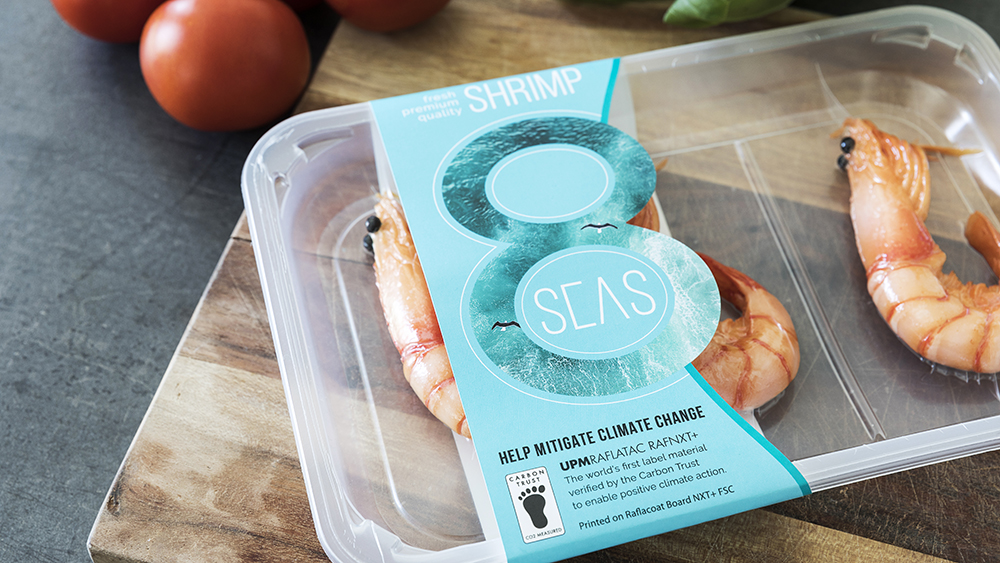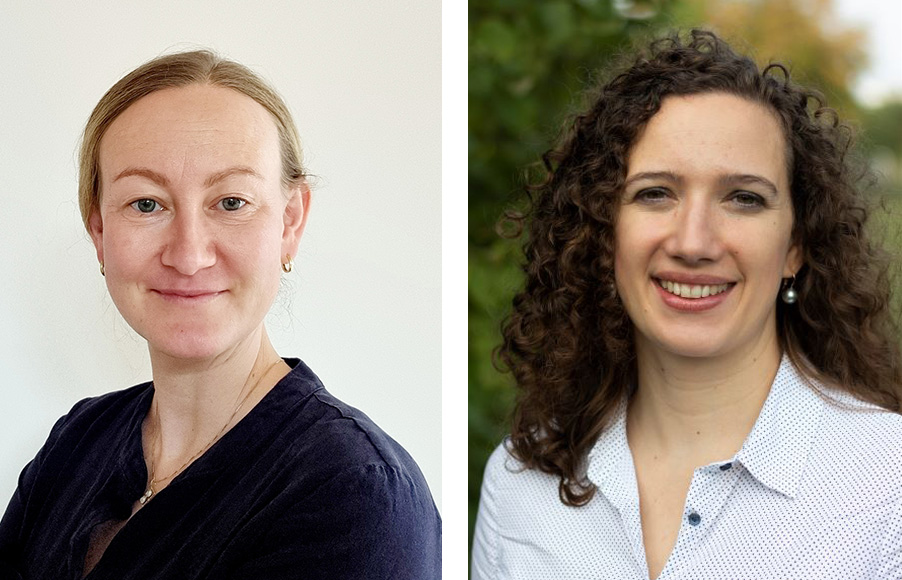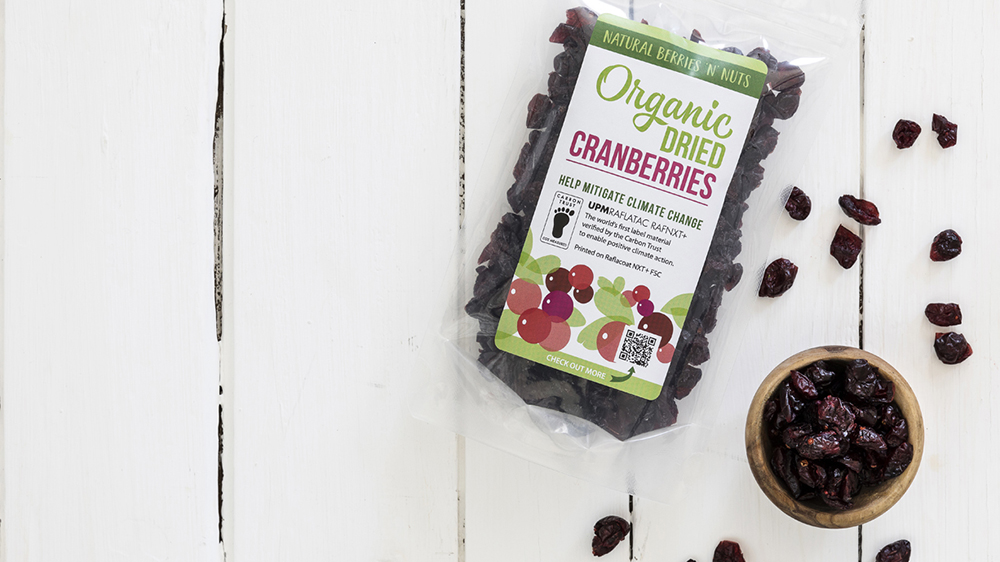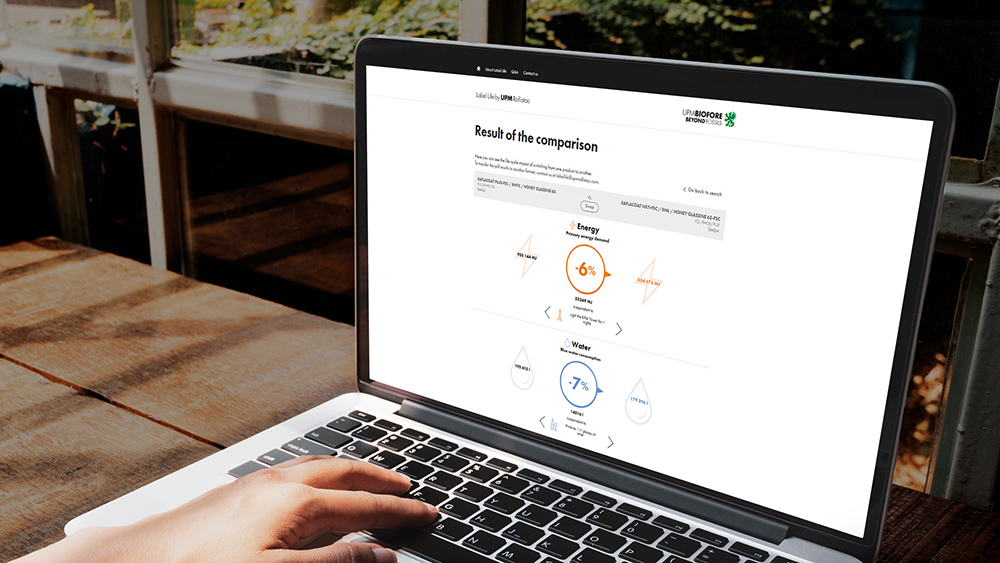Fossil fuel production was described at COP26 as being ‘dangerously out of sync’ with climate change targets and that measures must be taken by both energy and material producers.
In 2021, UPM Raflatac pledged to become the world’s first label materials company to go beyond fossils and design better solutions for the packaging industry. We invite you to join us on this challenging undertaking.
 POSITIVE CLIMATE ACTION. LABEL MATERIAL VERIFIED BY THE CARBON TRUST. With a reduced carbon footprint compared to our standard label range, as verified by the Carbon Trust to PAS 2050.
POSITIVE CLIMATE ACTION. LABEL MATERIAL VERIFIED BY THE CARBON TRUST. With a reduced carbon footprint compared to our standard label range, as verified by the Carbon Trust to PAS 2050.
The material conundrum
“All materials have their place in our economy and plastics are no exception. The key is to focus on resource efficiency, as well as increasing circularity. From a systemic perspective, we cannot completely phase out plastic and switch to other materials like paper,” notes Sophie Kieselbach, Senior Consultant at Sphera, a market leader in the ESG software and solutions space.
“We once made rough calculations that an area the size of Saudi Arabia would be required as additional forest cover to replace only the plastic packaging applications in Europe,” she reveals. Further, the plastic conundrum means that specific applications, such as surgical PPE or packaging, rely on unique functional properties and are intrinsically short-lived and single use.
Bioplastics are one option that can mitigate the climate impact of plastic but it depends on its feedstock, where it comes from and how much energy is needed to produce it, for example. “The most important aspect is to know your supply chain and your data. I would never sign a statement saying that bio-based plastic is always environmentally friendly,” emphasises Kieselbach.
Recycled paper is also unable to currently satisfy demand due to a combination of infrastructure gaps, supply shortages and fibre degradation over the cycles in use. Paper is an alternative, but not for all applications. Material switches must be supported with data, and one must proceed with caution not to overexert the strain on the already decreasing forest cover,” she adds.
 Sophie Kieselbach, Senior Consultant at Sphera and Flora D’Souza, Sustainability Manager at UPM Raflatac.
Sophie Kieselbach, Senior Consultant at Sphera and Flora D’Souza, Sustainability Manager at UPM Raflatac.
Labeling carbon savings
“Deforestation is the number one issue when sourcing bio-based raw materials,” says Flora D’Souza, Sustainability Manager at UPM Raflatac. “In our own UPM forests, we have various programmes to ensure that both forest stock, which sequesters carbon, and forest biodiversity are continuously enhanced.”
Want to know more about sustainable forest management at UPM? Click here to read all about it.
While it makes sense for label materials to be made from paper, she says that the priority is to ensure a label always fulfills its function: “A label that falls off before serving its purpose is ruled out immediately. Labels are also classified by their suitability for final packaging applications and recyclability. Once the technical specifications are met, potential label products can then be compared in terms of their sustainability and this is where Label Life comes into play.”
Developed several years ago in partnership with Sphera, Label Life has become an internal compass for the company. It is a dynamic life cycle assessment tool covering over 90% of UPM Raflatac’s product sales, informing customers about the environmental impacts of selected labelstock and the potential carbon savings that can be made by switching to using bio-based or recycled content.
“We calculated that a customer can potentially save up to 42% in label-related carbon emissions with our RecyClass-approved labels.”
Separately, we are also working to reduce the use of raw materials. Our RAFNXT+ range is one example of this. The Carbon Trust has verified that choosing RAFNXT+ over a standard labeling material has a positive climate impact, due to the smarter use of raw materials which reduces pressure on forests and increases the capacity to improve mitigation of climate change.
In addition, part of the RAFNXT+ range is also available as carbon neutral, certified by Climate Impact Partners,” she highlights.
 POSITIVE CLIMATE ACTION. LABEL MATERIAL VERIFIED BY THE CARBON TRUST. With a reduced carbon footprint compared to our standard label range, as verified by the Carbon Trust to PAS 2050.
POSITIVE CLIMATE ACTION. LABEL MATERIAL VERIFIED BY THE CARBON TRUST. With a reduced carbon footprint compared to our standard label range, as verified by the Carbon Trust to PAS 2050.
A multi-spectrum approach
Everybody wants to reduce their carbon emissions and switching to renewables often seems like the most natural solution. Kieselbach points out that resources are limited: “We must adapt a multi-spectrum approach: reduce, recycle, renew and reuse.”
Companies need to have a long-term plan when a certain technological limit of innovation has been reached, but the climate goals have not: “This should be a red line that signals the need for a transformative approach in both business and technology. I’m not undermining the effort being made, as I know how much money and effort it takes to change even the slightest thing in a running system.”
D’Souza agrees that material switches are tricky, adding that the aim is to ensure a dynamic, availability-gauged transferral to low-fossil resources and circular solutions: “We certainly cannot risk worsening deforestation or inflicting food shortages in poverty-stricken areas. Transformative ideas need to be in our pockets and it will take collaboration along the supply chain.”
Asked about the solution, she adds, “Handing out carbon footprints is not enough. People need advice on how to reduce them. We all need to take the hint and lay out sustainable products as the recommended option for our customers. The right approach is always a multi-pillar one: some products need to switch materials, but most will need to be downgauged and made more circular.”
